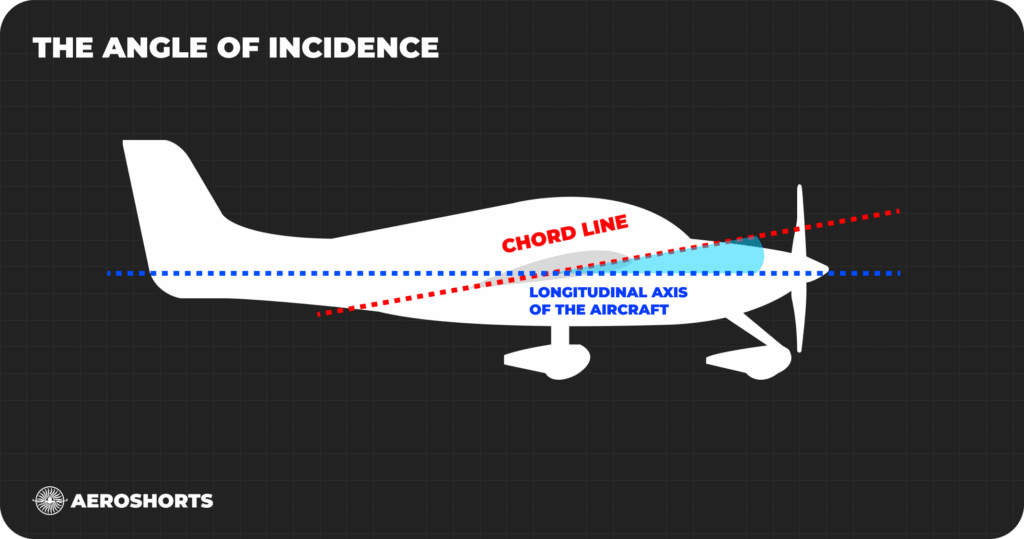Understanding the angle of incidence is essential when learning how airplanes are designed and how they fly. It’s one of those terms that sounds technical but has a surprisingly simple meaning and a big impact on how an aircraft performs.
The angle of incidence is the angle between the chord line of the wing (a straight line from the leading edge to the trailing edge) and the longitudinal axis of the aircraft, which runs through the fuselage from nose to tail. In simpler terms, it’s how the wing is tilted in relation to the body of the airplane.

This angle is fixed during the design and construction of the aircraft. Unlike the angle of attack, which constantly changes during flight as the aircraft moves through the air, the angle of incidence stays the same. Most general aviation aircraft have a small positive angle of incidence, usually around 5 to 6 degrees.
But why is that important?
When a plane is taking off, it moves forward along the runway with the nose level or only slightly raised. The airflow is almost perfectly horizontal. Thanks to the built-in angle of incidence, the wing already sits at a small angle to that airflow, creating enough lift to help the aircraft become airborne without needing an extreme nose-up position. This improves pilot visibility during takeoff and helps the aircraft lift off more smoothly.
During landing, the same principle applies. The airplane can maintain a slightly nose-down attitude while still generating lift. This again improves visibility and gives the pilot better control as the plane slows down and prepares to touch down.
In cruise flight, the angle of incidence also plays a role in reducing drag. It allows the fuselage to stay more level while the wing continues to produce the necessary lift, making flight more efficient and comfortable.
So while the angle of incidence might seem like a small design detail, it plays a key role in how an aircraft behaves in every phase of flight. It’s a great example of how smart engineering can improve both performance and safety in aviation.